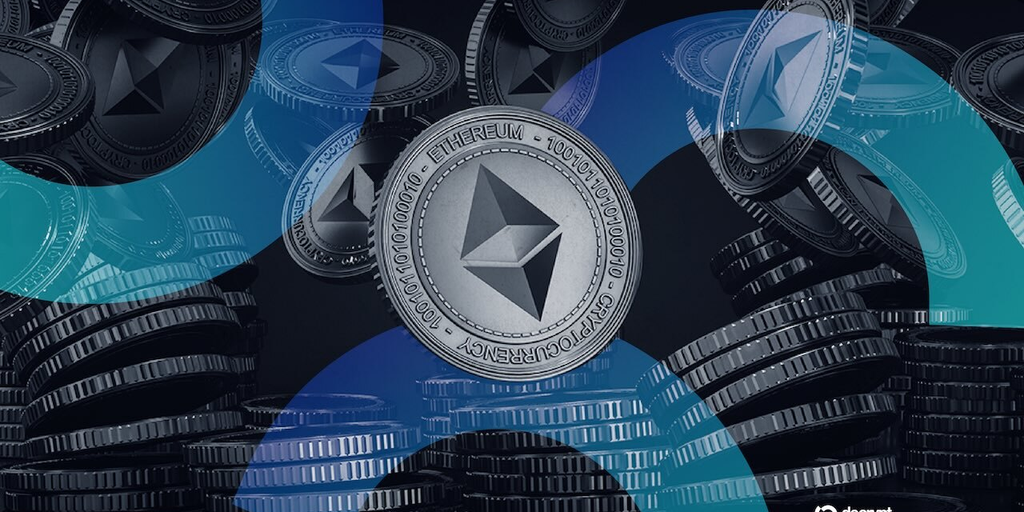In brief
- USDC’s concentration on Ethereum is bullish for the network’s native asset, analysts said.
- More than half of USDC’s circulating supply exists on Ethereum, while layer-2 networks and other scaling solutions support major amounts as well.
- Etheruem’s name will inevitably arise as investors research Circle’s business model post-IPO, one analyst said.
Circle’s $1.1 billion IPO on Thursday reflected Wall Street’s growing interest in stablecoins, but it may also strengthen institutions’ conviction toward Ethereum, analysts told Decrypt.
Although Circle issues its USDC stablecoin across more than 40 different networks, more than half of the stablecoin’s circulating supply exists on Ethereum, totaling $36.7 billion, according to crypto data provider DefiLlama.
According to Bitwise Senior Investment Strategist Juan Leon, USDC’s concentration on Ethereum is primarily based around the network’s prominence in decentralized finance, or DeFi. As a result, he told Decrypt that Ethereum should benefit more than other networks if USDC’s footprint grows, as Circle rides a new wave of momentum.
“Overall, it’s a super positive development for Ethereum and Coinbase,” he said, referring to the San Francisco-based exchange that has a revenue-sharing agreement for USDC with Circle.
“As USDC usage proliferates, that will continue to translate into more liquidity for DeFi and excitement for developers to build on Ethereum,” he added.
On Thursday, Circle shares soared 165% to $83.22 from an IPO price of $31, according to Yahoo Finance. On Friday, the company’s stock price continued climbing, hitting $114.50, as of noon Eastern Time, a 38% jump from Friday’s closing price.
Circle derives income from assets backing USDC like U.S. Treasuries. Ethereum was recently trading hands around $2,500, a 3% dip over the past 24 hours, according to crypto data provider CoinGecko.
When it comes to Ethereum’s competitors, $8 billion worth of USDC has been issued on Solana, representing around 13% of stablecoin’s circulating supply. Other Layer-1 networks, including Avalanche, Sui, and Aptos, each hold less than 2% of USDC’s circulating supply.
In addition to Ethereum’s mainnet, Circle has issued around $10 billion worth of USDC across Ethereum scaling solutions like Polygon and layer-2 networks like Arbitrum and Base, as well as Hyperliquid, the Arbitrum-based network underpinning the decentralized exchange.
Circle’s IPO is likely to generate interest in the company’s business model, and as investors start evaluating how stablecoins work, Ethereum name is likely to come up as technology powering emergent tech, Gerry O’Shea, head of global market insights at asset manager Hashdex told Decrypt.
“I think this could potentially help generate more attention around Ethereum and other smart contract platforms as investors look to understand the infrastructure that powers stablecoins,” he said. “IPOs bring a lot of attention.”
Spot Ethereum ETFs, which debuted in the U.S. last year, have emerged as a gauge for institutional interest in the second largest cryptocurrency by market capitalization.
Although the products have generated net inflows over the past eight trading days, Thursday’s inflows were relatively subdued at $11 million, compared to a recent peak of $110 million on Tuesday, according to crypto data provider CoinGlass.
Edited by James Rubin
Daily Debrief Newsletter
Start every day with the top news stories right now, plus original features, a podcast, videos and more.
in well organized HTML format with all tags properly closed. Create appropriate headings and subheadings to organize the content. Ensure the rewritten content is approximately 1500 words. Do not include the title and images. please do not add any introductory text in start and any Note in the end explaining about what you have done or how you done it .i am directly publishing the output as article so please only give me rewritten content. At the end of the content, include a “Conclusion” section and a well-formatted “FAQs” section.









![Big Move Incoming For Bitcoin & Altcoins! [Top Entries] Big Move Incoming For Bitcoin & Altcoins! [Top Entries]](https://i.ytimg.com/vi/0UKZLDYrZi0/maxresdefault.jpg)
